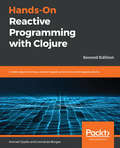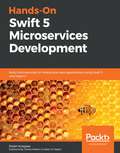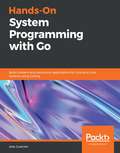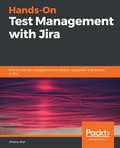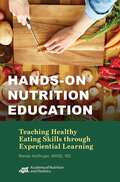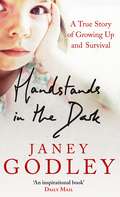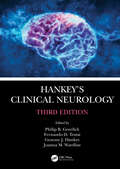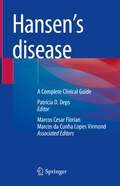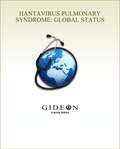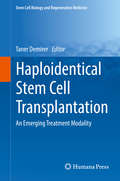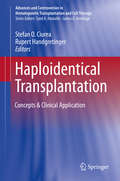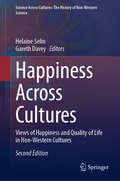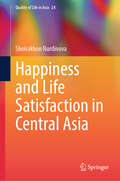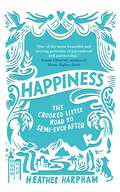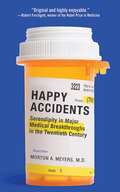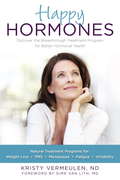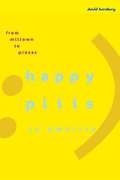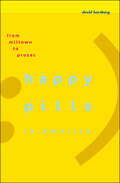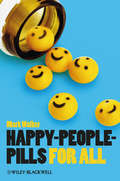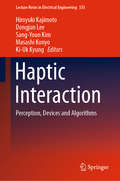- Table View
- List View
Hands-On Reactive Programming with Clojure: Create asynchronous, event-based, and concurrent applications, 2nd Edition
by Leonardo Borges Konrad SzydloLearn how to use RxClojure to deal with stateful computations Key Features Leverage the features of Functional Reactive Programming using Clojure Create dataflow-based systems that are the building blocks of Reactive Programming Use different Functional Reactive Programming frameworks, techniques, and patterns to solve real-world problems Book Description Reactive Programming is central to many concurrent systems, and can help make the process of developing highly concurrent, event-driven, and asynchronous applications simpler and less error-prone. This book will allow you to explore Reactive Programming in Clojure 1.9 and help you get to grips with some of its new features such as transducers, reader conditionals, additional string functions, direct linking, and socket servers. Hands-On Reactive Programming with Clojure starts by introducing you to Functional Reactive Programming (FRP) and its formulations, as well as showing you how it inspired Compositional Event Systems (CES). It then guides you in understanding Reactive Programming as well as learning how to develop your ability to work with time-varying values thanks to examples of reactive applications implemented in different frameworks. You'll also gain insight into some interesting Reactive design patterns such as the simple component, circuit breaker, request-response, and multiple-master replication. Finally, the book introduces microservices-based architecture in Clojure and closes with examples of unit testing frameworks. By the end of the book, you will have gained all the knowledge you need to create applications using different Reactive Programming approaches. What you will learn Understand how to think in terms of time-varying values and event streams Create, compose, and transform observable sequences using Reactive extensions Build a CES framework from scratch using core.async as its foundation Develop a simple ClojureScript game using Reagi Integrate Om and RxJS in a web application Implement a reactive API in Amazon Web Services (AWS) Discover helpful approaches to backpressure and error handling Get to grips with futures and their applications Who this book is for If you're interested in using Reactive Programming to build asynchronous and concurrent applications, this is the book for you. Basic knowledge of Clojure programming is necessary to understand the concepts covered in this book.
Hands-On Swift 5 Microservices Development: Build microservices for mobile and web applications using Swift 5 and Vapor 4
by Ralph Kuepper Tanner NelsonLearn to design and deploy fully functioning microservices for your applications from scratch using Swift, Docker, and AWS Key Features Understand server-side Swift development concepts for building your first microservice Build microservices using Vapor 4 and deploy them to the cloud using Docker Learn effective techniques for enhancing maintainability and stability of your Swift applications Book Description The capabilities of the Swift programming language are extended to server-side development using popular frameworks such as Vapor. This enables Swift programmers to implement the microservices approach to design scalable and easy-to-maintain architecture for iOS, macOS, iPadOS, and watchOS applications. This book is a complete guide to building microservices for iOS applications. You'll start by examining Swift and Vapor as backend technologies and compare them to their alternatives. The book then covers the concept of microservices to help you get started with developing your first microservice. Throughout this book, you'll work on a case study of writing an e-commerce backend as a microservice application. You'll understand each microservice as it is broken down into details and written out as code throughout the book. You'll also become familiar with various aspects of server-side development such as scalability, database options, and information flow for microservices that are unwrapped in the process. As you advance, you'll get to grips with microservices testing and see how it is different from testing a monolith application. Along the way, you'll explore tools such as Docker, Postman, and Amazon Web Services. By the end of the book, you'll be able to build a ready-to-deploy application that can be used as a base for future applications. What you will learn Grasp server-side Swift development concepts using practical examples Understand the microservices approach and why Swift is a great choice for building microservices Design and structure mobile and web applications using microservices architecture Discover the available database options and understand which one to choose Scale and monitor your microservices Use Postman to automate testing for your microservices API Who this book is for The book is for iOS, iPadOS, and macOS developers and Swift programmers who want to understand how Swift can be used for building microservices. The book assumes familiarity with Swift programming and the fundamentals of the web, including how APIs work.
Hands-On Systems Programming with Go: Build modern and concurrent applications for Unix and Linux systems using Golang
by Alex GuerrieriIf you are a developer who has intermediate knowledge of Go but little to no knowledge of UNIX and Linux system programming and want to learn and master system programming with Go, this book is for you.
Hands-On Test Management with JIRA: End-to-end Test Management With Zephyr, Synapsert, And Jenkins In Jira
by Afsana AtarThis book is for any quality assurance professional, software project manager or test manager interested in learning to implement test management best practices in their team or organization.
Hands-on Nutrition Education: Teaching Healthy Eating Skills Through Experiential Learning
by Renée HoffingerThis book will guide you from the theoretical underpinnings of hands-on nutrition education (HONE) programs to the tools necessary to turn that theory into practice and customize a program for your target population. Learn practical guidelines for different types of HONE activities, including: Food demonstrations; Grocery store tours; Cooking classes; Development and management of institutional HONE programs. Resources include equipment lists, cooking class materials, resource planning sheets, medical documentation guide, program surveys and evaluations, sample funding proposal and much more.
Handstands In The Dark: A True Story of Growing Up and Survival
by Janey GodleyBrought up amid near-Dickensian squalour in the tough East End of Glasgow and sexually abused by her uncle, Janey married into a Glasgow criminal family as a teenager, then found herself having to cope with the murder of her mother, violence, religious sectarianism, abject poverty and a frightening family of in-laws.First-hand, Janey saw the gangland violence and met extraordinary characters within an enclosed and seldom-revealed Glasgow underworld - from the grim and far-from-Swinging 60s, to the discos of the 70s, to the tidal wave of heroin addiction which swept through and engulfed Glasgow's East End during the 1980s.This evocative, intimate and moving portrayal of a woman forced to fight every day for her family's future will strike a chord with anyone who has ever struggled against adversity.
Hanging By A Thread: The Missions of a Helicopter Rescue Doctor
by Emmanuel CauchyOutdoor sports enthusiast and extreme doctor Emmanuel Cauchy reveals here for the first time the perilous rescues he’s performed in the world’s most terrifying and unforgiving mountain climates. Known around the world as the “vertical doctor,” Emmanuel Cauchy gives stunning and terrifying accounts of his days as a rescue doctor on Mont Blanc, which rises more than 11,000 feet in the Alps along the French-Italian border. From snowy mountain peaks and deep mountain crevasses to the small confines of a helicopter high above—Cauchy’s job takes him where most of us can only imagine.Using new scientific research pioneered on the mountainside in life-saving medical procedures, Cauchy’s dramatic mountain rescues will leave even the most seasoned reader, doctor, or outdoorsman astonished. Here are seventeen years spent in the air and on the ground in some of the world’s most unforgiving territory. His tales describe the extremes of both climate and human endurance and reverberate with the author’s unshakable love of life.This is an uplifting, extraordinary, and moving book from a great humanitarian stuntman who spent his time literally living life on the edge.
Hankey's Clinical Neurology
by Philip B. Gorelick Graeme J. Hankey Joanna M. Wardlaw Fernando D. TestaiThe rapid expansion of clinical knowledge in the field of neurology warrants a new edition of this highly regarded textbook of neurology. In addition to the anchor chapters on major areas such as headache, stroke, developmental disorders, dementia, epilepsy, acquired metabolic disorders, and others, several new chapters have been added to meet the clinical demand for those in practice. This edition features new chapters on neurotoxicology, neuroimaging, and neurogenetics including basic and more advanced concepts for the practitioner. Finally, as the health care system continues to evolve, a new chapter on population health and systems of care reflects current practice in team care, patient-centric approaches, and value-based care. *Pithy bullet points and standard prose allow the reader to assimilate concepts and key messages with ease *Summary tables, neuroimages, photomicrographs, neuroanatomic drawings, gross and microscopic neuropathologic specimen photos, graphics, and summary boxes further enhance the text *Chapters are crafted in a way to appeal to both the visuospatial and analytic functional centers of the brain, as we stimulate the senses and learn Hankey’s Clinical Neurology, Third Edition, will be of value to medical students, physicians in training, neurology fellows, neurologist and neurosurgeon practitioners, and advanced practice professionals (e.g., nurse practitioners and physician assistants) who are faced with neurologic practice challenges.
Hannah Riddell
by Julia BoydIn the late nineteenth century hundreds of Christian missionaries were dispatched to Japan to convert the "heathen," a task that many felt could be accomplished within a few decades. That expectation proved to be wildly optimistic, since today fewer than one percent of Japanese are Christian. The efforts and even the names of those early missionaries are now largely forgotten, but the work of one woman, Hannah Riddell, proved to be vital and lasting. While visiting the Honmyoji temple in Kumamoto, Hannah encountered a group of lepers - "in every degree of loathsomeness" - and her life suddenly changed. Though she continued her efforts to save the souls of ordinary Japanese, Hannah became determined to improve the wretched lives of lepers. Against great odds, she founded one of the first modern leprosariums in Japan, but Hannah's iron will and splendid lifestyle soon put her at odds with her English colleagues and their small missionary community was torn apart. Undaunted, Hannah continued her work independently and came to know many of the great figures of Meiji Japan. Hannah's story and that of her niece, Ada, who ran the hospital after her aunt's death until its dramatic closure in 1941, poignantly describe the valiant battle against a terrible disease. At the same time the narrative vividly brings to life early encounters between the Japanese and the English and their very different cultures.
Hansen’s Disease: A Complete Clinical Guide
by Patrícia D. DepsHansen’s disease (leprosy) is endemic in more than 100 countries worldwide, with over 200,000 new diagnoses each year and more than 4 million people living with some form of HD-related impairment. The World Health Organization’s ‘Global Leprosy Strategy’ timeline for Hansen’s disease elimination indicates that it will be encountered in clinical practice in endemic countries for at least another decade. Increasing north-to-south migration, global travel and overseas medical work mean that physicians in non-endemic countries will also encounter patients with Hansen’s disease, which can affect people for many years before diagnosis and after treatment. For busy clinicians, it represents a challenge, in terms of disease learning and updating knowledge and skills. This book provides a concise, up-to-date, and comprehensive source of information on Hansen’s disease clinical practice. It covers essential topics on all clinical aspects, complemented by history, epidemiology, paleopathology, and the social impact of the disease. Edited and written by contributors with decades of experience, it’s divided into twenty-six chapters clarifying the genetics and neurological manifestations, physical disabilities and its prevention; oral, ophthalmological, and bone changes, among others. For the primary audience of practicing physicians, it is an affordable point of reference, whilst also being suitable for student and trainee doctors. It’s also accessible to general practitioners and specialists in dermatology, neurology, pediatrics, infectious disease, family and community medicine, and orthopedics, as well as to non-specialists and other healthcare professionals.
Hantavirus Pulmonary Syndrome: Global Status 2010 edition
by Dr Stephen Berger Gideon InformaticsHantavirus Pulmonary Syndrome: Global Status is one in a series of GIDEON ebooks which summarize the status of individual infectious diseases, in every country of the world. Data are based on the GIDEON database (www.gideononline.com) which relies on standard text books, peer-review journals, Health Ministry reports and ProMED, supplemented by an ongoing search of the medical literature. Chapters are arranged alphabetically, by country name. Each section is divided into six subsections. 1. Descriptive epidemiology 2. Summary of clinical features 3. Global status of the disease4. Potential use in Bioterrorism 5. Status of the disease in a specific country 6. References
Haploidentical Stem Cell Transplantation
by Taner DemirerThis book discusses the aspects of haploidentical transplants and will shed light on the debates and questions on this burgeoning field and timely topic. Donor selection, graft failure, minimal CD34+ cell requirement, and conditioning regimens used for haploidentical transplants will be written by expert authors dealing with this type of transplants. Approximately one third of the books' chapters cover logic and basic aspects; the remaining two thirds of the book discuss clinical aspects, outcomes, and future perspectives, thus providing a comphrensive discussion of the topic. Haploidentical transplantation is extremely timely, rapidly-changing area and increasing its use will decrease the need for time-consuming, expensive, unrelated donor search. Moreover, Haploidentical Stem Cell Transplantation brings a set of clear answers to questions of feasibility, advantages over unrelated transplants, cost effectivity and outcome. .
Haploidentical Transplantation (Advances And Controversies In Hematopoietic Transplantation And Cell Therapy Ser.)
by Stefan O. Ciurea Rupert HandgretingerIn this book, world-renowned experts in the field express well-reasoned opinions on a range of issues and controversies relating to haploidentical transplantation with the aim of providing practicing hematologists with clinically relevant and readily applicable information. Among the areas covered are graft manipulation and methods to control T-cell alloreactivity, the nature of the ideal graft and donor, haploidentical transplantation in pediatric and adult patients with malignant and nonmalignant diseases, immunologic reconstitution following transplantation, complications, and the prevention and treatment of relapse post transplantation. Attention is drawn to the implications of high-impact clinical trials whenever such trials are available. The readily intelligible text is complemented by numerous helpful tables, algorithms, and figures. The book will provide practical support for hematologists and transplant physicians as they attempt to provide optimal care in this exciting but increasingly complex medical specialty.
Happiness Across Cultures: Views of Happiness and Quality of Life in Non-Western Cultures (Science Across Cultures: The History of Non-Western Science #6)
by Helaine Selin Gareth DaveyThis second edition of Happiness Across Cultures contains 8 brand new chapters on previously uncovered topics, such as Covid19, refugees, and violence. Different cultures experience happiness differently. Traditionally, the West is considered materialistic, and happiness is said to come from achievement and acquisition. The East is said to be more people-oriented, where happiness is a result of deep personal interactions. Thus, poor people can be happier in the East than the West, because they are not so concerned with possession and more with society. This new edition considers happiness and quality of life in non-Western countries and cultures. Its coverage is now more diverse and spans the breadth of the non-Western world, revealing unique perspectives of happiness and life quality embedded in rich cultural traditions and histories.
Happiness and Life Satisfaction in Central Asia (Quality of Life in Asia #24)
by Shoirakhon NurdinovaThis book offers the first comprehensive examination of life satisfaction and happiness in Central Asia from an empirical and comparative perspective. Drawing on econometric models, it reveals how economic conditions, gender, culture, and social norms shape subjective well-being in Kazakhstan, Kyrgyzstan, Tajikistan, Turkmenistan, and Uzbekistan. The findings provide insights into the complex structure of quality of life in a region that has received little attention in happiness research. As such, the book makes a pioneering contribution to the study of well-being in Central Asia and serves as a valuable resource for scholars, policymakers, and researchers interested in happiness-oriented development and the determinants of well-being worldwide.
Happiness: How to Build a Family out of Love and Spare Parts
by Heather HarphamReese Witherspoon's Book Club Pick 2018 An Amazon Best Memoir of the Month One of Elle Magazine's Best Books of 2017 Goodreads Best of the Month Daily Beast, &“Books I Can&’t Live Without&” Good Housekeeping, Best New Books for Summer Book Riot, 100 Must Read Books about Happiness A page-turning, shirt-grabbing true story that follows a one-of-a-kind family required to make nearly unimaginable choices Happiness starts out as a charming courtship between hopelessly attracted opposites: Heather, an out-going, theatre-performing California girl, and Brian, an intellectual New Yorker with an unwavering writing routine. But when Heather falls pregnant, their magical interlude abruptly ends—Brian loves her, only he doesn&’t want kids. So Heather decides to have their baby alone. Mere hours after Gracie&’s arrival, Heather&’s bliss is interrupted when a nurse wakes her, 'Get dressed, your baby is in trouble.' This is not how Heather had imagined motherhood. As concerns for her health grow, Brian and Heather begin a cautious return to each other. Happiness transforms heartbreak and parental fears into a lyrical meditation on love and happiness, in all their crooked configurations.
Happy
by Alex LemonHis freshman year of college, Alex Lemon was supposed to be the star catcher on the Macalester College baseball team. He was the boy getting every girl, the hard-partying kid everyone called Happy. In the spring of 1997, he had his first stroke. For two years Lemon coped with his deteriorating health by sinking deeper into alcohol and drug abuse. His charming and carefree exterior masked his self-destructive and sometimes cruel behavior as he endured two more brain bleeds and a crippling depression. After undergoing brain surgery, he is nursed back to health by his free-spirited artist mother, who once again teaches him to stand on his own. Alive with unexpected humor and sensuality, Happy is a hypnotic self-portrait of a young man confronting the wreckage of his own body; it is also the deeply moving story of a mother's redemptive and healing powers. Alex Lemon's Technicolor sentences pop and sing as he writes about survival--of the body and of the human spirit.
Happy Accidents: Serendipity in Major Medical Breakthroughs in the Twentieth Century
by Morton A. MeyersHappy Accidents is a fascinating, entertaining, and highly accessible look at the surprising role serendipity has played in some of the most important medical discoveries in the twentieth century. What do penicillin, chemotherapy drugs, X-rays, Valium, the Pap smear, and Viagra have in common? They were each discovered accidentally, stumbled upon in the search for something else. In the 1990s, Pfizer had high hopes for a new drug that would boost blood flow to the heart. As they conducted trials on angina sufferers, researchers noted a startling effect: while the drug did not affect blood flow to the heart, it did affect blood flow elsewhere! Now over six million American men have taken Viagra in their lifetime.Winston Churchill once said, "Men occasionally stumble across the truth, but most of them pick themselves up and hurry off as if nothing has happened." Within the scientific community, a certain stigma is attached to chance discovery because it is wrongly seen as pure luck. Happy accidents certainly happen every day, but it takes intelligence, insight, and creativity to recognize a "Eureka, I found what I wasn't looking for!" moment and know what to do next. In discussing medical breakthroughs, Dr. Morton Meyers makes a cogent, highly engaging argument for a more creative, rather than purely linear, approach to science. And it may just save our lives!
Happy Hormones
by Kristy Vermeulen Dirk Van LithREGAIN THE HEALTHY LIFE YOU DESERVEMillions of women struggle every day with problems like low energy, unexplained weight gain, and dull moods, yet too often diet, exercise, and pharmaceutical drugs are thought to be the only available options. Hormones--the chemical messengers of the body--influence every single process in our bodies: they govern our growth, weight, and energy, as well as fight stress and anxiety, relieve depression, and maintain personal drive.Based on Dr. Kristy Vermeulen's popular six-week online course, Happy Hormones explains how hormones affect your day-to-day routine and provides expert guidance to help you identify your hormonal imbalances and treat them in a natural, healthy way.Happy Hormones also includes:* Simple and effective self-assessments to help you diagnose your hormonal imbalances* Six-step hormonal balancing programs for adrenal, thyroid, progesterone, estrogen, and testosterone imbalances* Tools to help you read your own hormonal messages so you can stay in tune with your body and improve your overall well-being* FAQs of bioidentical and synthetic hormones, along with guidelines to help you safely and effectively apply them in your treatment program* Nutrition program with over 45 delicious, healthy, and hormone-friendly recipes* Expert guidance to feeling and looking young, healthy, and fabulousHappy Hormones is a comprehensive, practical guide for any woman interested in balancing their hormones. It will help you get back to your energetic, vibrant, and healthy self. Representing an important application of a fast-growing branch of health science, Happy Hormones will allow you to shed unwanted weight and regain your energy for a healthy, fabulous life.
Happy Land
by Dolen Perkins-Valdez'It's time we name our kingdom!' he shouted over the wind. 'I say we call this place Happy Land. If this ain't the land of happy people, then where is it? Why not create our heaven right here on earth?'Nikki Berry hasn't seen her grandmother Rita in years. When she calls out of the blue asking Nikki to visit her urgently in the hills of North Carolina, Nikki hesitates only for a moment. Her mother and grandmother have long been estranged, and after years of silence in her family, Nikki is determined to learn the truth while she still can.But instead of answers about the recent past, Mother Rita tells Nikki the incredible story of a kingdom on this very mountain, and of her great-great-great grandmother, Luella, who became its queen.It sounds like the makings of a fairy tale - royalty among a community of freed people. But the more Nikki learns about the Kingdom of the Happy Land and the lives of those who dwelled in the ruins she discovers in the woods, the more she realizes how much of her identity and her family's secrets are contained in these hills. Because this land is their legacy, and it will be up to her to protect it before - like so much else - it is stolen away.Inspired by true events, Happy Land is a transporting multi-generational novel about the stories that shape us and the dazzling courage it takes to dream.
Happy Land
by Dolen Perkins-Valdez'It's time we name our kingdom!' he shouted over the wind. 'I say we call this place Happy Land. If this ain't the land of happy people, then where is it? Why not create our heaven right here on earth?'Nikki Berry hasn't seen her grandmother Rita in years. When she calls out of the blue asking Nikki to visit her urgently in the hills of North Carolina, Nikki hesitates only for a moment. Her mother and grandmother have long been estranged, and after years of silence in her family, Nikki is determined to learn the truth while she still can.But instead of answers about the recent past, Mother Rita tells Nikki the incredible story of a kingdom on this very mountain, and of her great-great-great grandmother, Luella, who became its queen.It sounds like the makings of a fairy tale - royalty among a community of freed people. But the more Nikki learns about the Kingdom of the Happy Land and the lives of those who dwelled in the ruins she discovers in the woods, the more she realizes how much of her identity and her family's secrets are contained in these hills. Because this land is their legacy, and it will be up to her to protect it before - like so much else - it is stolen away.Inspired by true events, Happy Land is a transporting multi-generational novel about the stories that shape us and the dazzling courage it takes to dream.
Happy Pills In America: From Miltown To Prozac
by David HerzbergValium. Paxil. Prozac. Prescribed by the millions each year, these medications have been hailed as wonder drugs and vilified as numbing and addictive crutches. Where did this "blockbuster drug" phenomenon come from? What factors led to the mass acceptance of tranquilizers and antidepressants? And how has their widespread use affected American culture? David Herzberg addresses these questions by tracing the rise of psychiatric medicines, from Miltown in the 1950s to Valium in the 1970s to Prozac in the 1990s. The result is more than a story of doctors and patients. From bare-knuckled marketing campaigns to political activism by feminists and antidrug warriors, the fate of psychopharmacology has been intimately wrapped up in the broader currents of modern American history. Beginning with the emergence of a medical marketplace for psychoactive drugs in the postwar consumer culture, Herzberg traces how "happy pills" became embroiled in Cold War gender battles and the explosive politics of the "war against drugs"—and how feminists brought the two issues together in a dramatic campaign against Valium addiction in the 1970s. A final look at antidepressants shows that even the Prozac phenomenon owed as much to commerce and culture as to scientific wizardry. With a barrage of "ask your doctor about" advertisements competing for attention with shocking news of drug company malfeasance, Happy Pills is an invaluable look at how the commercialization of medicine has transformed American culture since the end of World War II.
Happy Pills in America: From Miltown to Prozac
by David HerzbergValium. Paxil. Prozac. Prescribed by the millions each year, these medications have been hailed as wonder drugs and vilified as numbing and addictive crutches. Where did this "blockbuster drug" phenomenon come from? What factors led to the mass acceptance of tranquilizers and antidepressants? And how has their widespread use affected American culture? David Herzberg addresses these questions by tracing the rise of psychiatric medicines, from Miltown in the 1950s to Valium in the 1970s to Prozac in the 1990s. The result is more than a story of doctors and patients. From bare-knuckled marketing campaigns to political activism by feminists and antidrug warriors, the fate of psychopharmacology has been intimately wrapped up in the broader currents of modern American history. Beginning with the emergence of a medical marketplace for psychoactive drugs in the postwar consumer culture, Herzberg traces how "happy pills" became embroiled in Cold War gender battles and the explosive politics of the "war against drugs"—and how feminists brought the two issues together in a dramatic campaign against Valium addiction in the 1970s. A final look at antidepressants shows that even the Prozac phenomenon owed as much to commerce and culture as to scientific wizardry.With a barrage of "ask your doctor about" advertisements competing for attention with shocking news of drug company malfeasance, Happy Pills is an invaluable look at how the commercialization of medicine has transformed American culture since the end of World War II.
Happy-People-Pills For All (Blackwell Public Philosophy Series #55)
by Mark WalkerHappy-People-Pills for All explores current theories of happiness while demonstrating the need to develop advanced pharmacological agents for the enhancement of our capacity for happiness and wellbeing. Presents the first detailed exploration of the enhancement of happiness A controversial yet rigorous argument that demonstrates the moral imperative for the development and mass distribution of ‘happy-pills’, to promote the wellbeing of the individual and society Brings together the philosophy, psychology and biology of happiness Maps the development of the next generation of positive mood pharmacology Offers a corrective to contemporary accounts of happiness
Haptic Interaction: Perception, Devices and Algorithms (Lecture Notes in Electrical Engineering #535)
by Hiroyuki Kajimoto Ki-Uk Kyung Masashi Konyo Dongjun Lee Sang-Youn KimThis book constitutes the proceedings of the third international conference AsiaHaptics 2018, held in Songdo, Korea. It presents the state-of-the-art of the diverse haptics (touch)-related research, including perception and illusion, development of haptics devices, and applications to a wide variety of fields such as education, medicine, telecommunication, navigation and entertainment. This book is a valuable resource not only for active haptics researchers, but also for general readers wishing to understand the status quo in this interdisciplinary area of science and technology.
